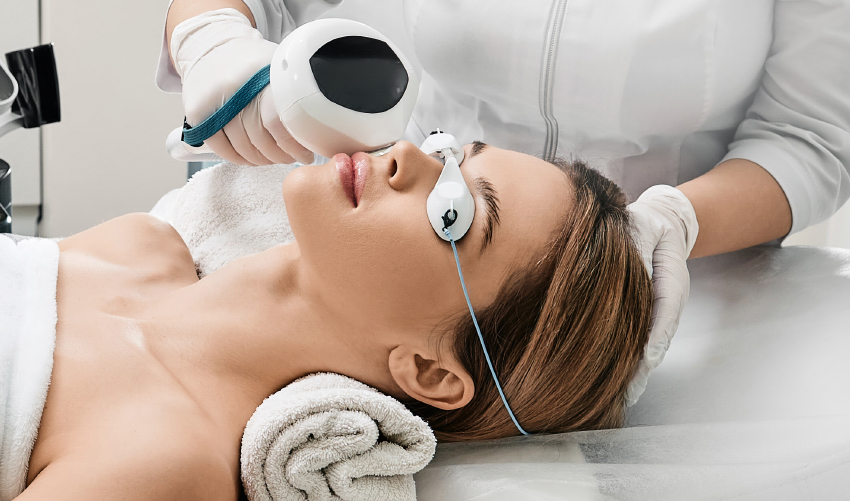Understanding Ocular Rosacea: How IPL Therapy Can Help Manage Symptoms and Its Connection to Meibomian Gland Dysfunction and Dry Eye Disease

Rosacea is a chronic skin condition that affects millions of people worldwide, characterized by facial redness, flushing, and sometimes papules and pustules. However, what many may not realize is that rosacea can also affect the eyes, a condition known as ocular rosacea. Ocular rosacea can lead to a range of eye symptoms, including dryness, irritation, burning, and even vision disturbances. Moreover, ocular rosacea is closely linked to meibomian gland dysfunction (MGD) and dry eye disease (DED), exacerbating the discomfort experienced by those with the condition. In recent years, Intense Pulsed Light (IPL) therapy has emerged as a promising treatment option for managing ocular rosacea and its associated complications. In this blog post, we'll delve into the relationship between ocular rosacea, MGD, and DED, and explore how IPL therapy can offer relief to those affected.
Understanding Ocular Rosacea: Ocular rosacea is a subtype of rosacea that primarily affects the eyes and surrounding eyelid area. It is estimated that up to 60% of individuals with rosacea also experience ocular symptoms. These symptoms can vary in severity and may include:
- Dryness and irritation
- Grittiness or a foreign body sensation in the eyes
- Burning or stinging sensations
- Redness and inflammation of the eyelids (blepharitis)
- Sensitivity to light (photophobia)
- Blurred vision or fluctuating vision
The Connection to Meibomian Gland Dysfunction and Dry Eye Disease: Meibomian glands are tiny oil-producing glands located along the eyelid margins. Their primary function is to secrete oils that help lubricate the surface of the eye and prevent tear evaporation. In ocular rosacea, chronic inflammation can compromise the function of these glands, leading to meibomian gland dysfunction (MGD). As a result, the quality and quantity of the tear film are affected, contributing to the development of dry eye disease (DED).
How IPL Therapy Can Help Manage Ocular Rosacea: Intense Pulsed Light (IPL) therapy has gained recognition as an effective treatment modality for ocular rosacea and its associated complications. IPL delivers controlled pulses of light energy to targeted areas of the skin, where it is absorbed by blood vessels and inflammatory cells, leading to their destruction. In the context of ocular rosacea, IPL can help alleviate symptoms by:
- Reducing inflammation: IPL targets the underlying inflammation that contributes to ocular rosacea, helping to decrease redness, swelling, and irritation of the eyelids and ocular surface.
- Improving meibomian gland function: By reducing inflammation and promoting tissue healing, IPL therapy can help restore normal meibomian gland function, leading to improved oil secretion and tear film stability.
- Alleviating dry eye symptoms: By addressing the underlying causes of dry eye disease, including meibomian gland dysfunction and tear film instability, IPL therapy can provide relief from dryness, discomfort, and other ocular symptoms associated with ocular rosacea.
- Enhancing overall ocular health: IPL therapy not only targets the visible symptoms of ocular rosacea but also promotes overall ocular health and function, helping to prevent long-term complications and improve the quality of life for affected individuals.
If you're experiencing symptoms of ocular rosacea, call to schedule a consult with Dr. Kaur to explore treatment options and develop a personalized management plan tailored to your needs.




